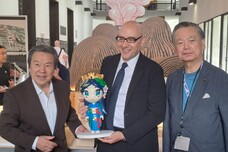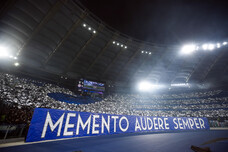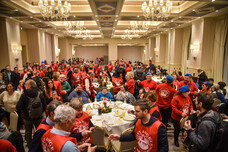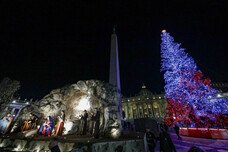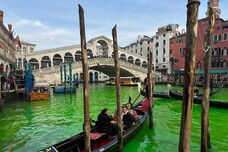The inauguration of the photographic exhibition entitled 'The Restoration of the Red Monastery: Ingenuity and History' was held today at the Red Monastery in Sohag, organised by the Italian Embassy and the Italian Cultural Institute in Egypt, in cooperation with the De Cesaris Onlus Association and the Coptic-Islamic Antiquities Department of Sohag.
The exhibition, curated by the Italian Honorary Consul in Luxor Francis Amin, documents the restoration project of the frescoes in the sanctuary of the Red Monastery, dedicated to Saints Bishoi and Bigol, known to be the 'Sistine Chapel' of Coptic Christians.
The restoration project, financed by the US agency USAID in collaboration with the American Research Center in Egypt, continued from 2002 to 2012: a decade of intense activity for the Italian restorers, who spent about six months a year at the site. In a total working time equivalent to 5,700 days, the team of Italian restorers dedicated themselves to the consolidation, cleaning and aesthetic reintegration of the scenes, with the aim of preserving such a significant part of the Coptic art heritage.
"Today, it would be impossible to appreciate this masterpiece without the meticulous restoration and recovery work of the team of restorers - 28 Italians and 12 Egyptians - under the leadership of Luigi De Cesaris, carried out together with the chief restorers, Adriano Luzi, Alberto Sucato and Emiliano Ricchi," Ambassador Quaroni stressed, expressing his thanks to curator Francis Amin and recalling how Luigi De Cesaris "was a highly appreciated restorer, both on a professional and human level, for his exceptional talent and his always smiling and collaborative spirit."
"The work carried out in the Red Monastery is a particularly shining example of the deep-rooted Italian-Egyptian collaboration in the field of restoration of Egypt's extremely rich artistic and cultural heritage," the Ambassador continued. "Today's ceremony is also a heartfelt tribute to the work and passion of the team of Italian restorers led by Luigi De Cesaris.
The marvellous frescoes were created by several artists according to the Coptic custom, in which several layers of wall paintings are superimposed. The visitor who crosses the threshold of the sanctuary is confronted with a stage adorned with faces and figures arranged on three levels of frescoes, where St. Athanasius of Alexandria and the Patriarchs of the Coptic Church appear at the bottom, then the niches dedicated to Saints Shenouda, Bishoi and Bigol, and finally, in the apsidal dome, Christ Enthroned, the prophets of the Old Testament and the Virgin Mary.
ALL RIGHTS RESERVED © Copyright ANSA

